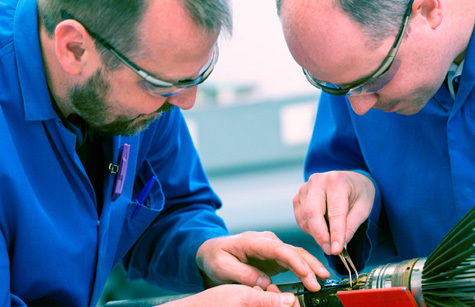
Well intervention specialist Read Cased Hole has collaborated with GE Oil and Gas to develop a new micro-leak detection tool that can be deployed in well intervention processes including slickline, electric line, coiled tubing and tractor.
Read’s diagnostic solution combines GE Oil and Gas’s NTO Acoustic Noise Tool with its micro-leak detection service line, which creates a detailed map of downhole acoustic energy.
GE’s Digital Noise Tool (NTO) houses a sensitive hydrophone that is highly effective in the detection of flow inside and outside the cased well. Multi-frequency, acoustic technology has been developed to detect the sound energy that is created by micro-leaks and turbulent fluid flow.
Read has developed micro-leak detection software that segregates the acoustic data according to the frequency of the captured sound energy enabling spectral analyses of the data and accurate diagnosis of unwanted well integrity issues.
This combines with measurements from flowmeter and fast response temperature sensors to provide precision location of leak site, identification of active flow pathways and determines the sources of flow energy.
The Aberdeen-based company partnered with GE Oil and Gas on field trials of the NTO (noise tool) technology, which has helped accelerate delivery of the Micro-leak Detection service line.
Read’s technical director Tobben Tymons said the relationship between large corporations and smaller, technology companies such as his were a key element in delivering new services.
“Read has been involved with GE since the early 90s. It’s a unique relationship. For the the noise tool, we were approached by GE to take it on to field trial state. Our position in the market is one of innovation and mobility and that is what smaller companies can offer.
“We’ve been involved since early field trials through to launch of our micro-leak detection solution.”
Tobben said the aim was to simplify the process for clients and develop an everyman solution for leak detection.
“We have been trying to develop a solution that has greater market accessibility and can be used on multiple wells. There are companies out there who deliver a very high end service using ultrasound and noise technology, but they come with a very hefty price tag.”
Increased well testing is part of the ageing process of the North Sea assets.
“A lot of these assets are being asked to extend life of field and that can come with increased risk. This means a lot more diagnostics is being done to ensure they are safe.
“They are like cars, they do not get better with age.
“We have have worked closely with customers in the North Sea and Middle East to deliver fast response analysis that can quickly identify integrity issues on wells of all types and stages in their life cycle.”
GE product line manager Craig Feherty said: “Read’s ability to turn quality data into actionable information allowed us to quickly test and launch the NTO to the marketplace.”